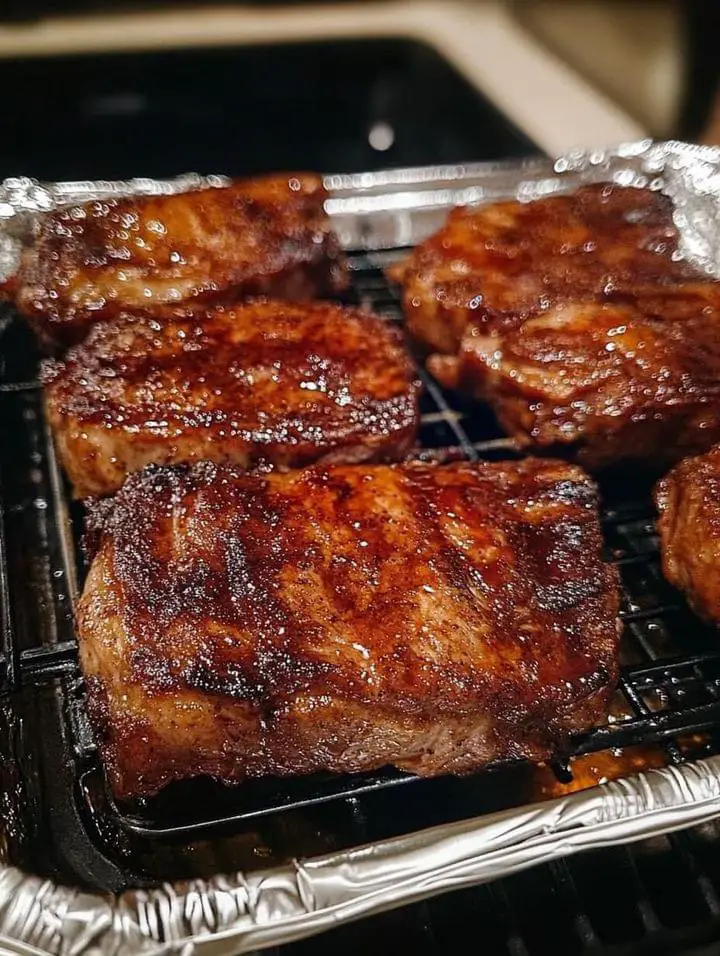One of the most common questions I get is how I manage to make my meats—whether chicken breast, pork chops, steaks, or salmon—so tender and juicy every time. You may think there’s some complicated technique or secret marinade, but it’s actually much simpler than that.
The Best Way Ever: Baking Soda!
Yes, baking soda—that humble pantry staple—holds the key to incredibly tender meats. Some of you may already know this trick, but if you don’t, you’re missing out! This quick and easy method can take your meat dishes from ordinary to melt-in-your-mouth extraordinary.
Here’s the simple step-by-step process to transform your meats using baking soda.
How to Tenderize Meat with Baking Soda
Ingredients:
- Meat of your choice (chicken breast, pork chops, steaks, or salmon)
- Baking soda
Instructions:
- Wash Your Meat: Before you start the tenderizing process, make sure to wash your meat thoroughly. This helps to remove any debris or excess packaging residue.
- Sprinkle with Baking Soda: Lightly sprinkle baking soda on both sides of the meat. To make this easier, you can poke small holes in the baking soda box with a fork for better control, or transfer it to a shaker for even distribution.
- Let it Sit for 10 Minutes: Let the baking soda do its magic by leaving it on the meat for just 10 minutes. Be careful not to exceed this time, as leaving it on for too long can alter the texture in undesirable ways.
- Rinse Thoroughly: After 10 minutes, rinse the meat thoroughly to remove the baking soda. You don’t want any residue left, as it can affect the flavor.
- Pat Dry: Use paper towels to pat the meat dry. This step is crucial, especially if you plan to sear or fry the meat, as excess moisture can cause the meat to steam rather than sear.
- Cook/Season as Usual: Now that your meat is tenderized, you can season and cook it as you normally would. Whether you’re grilling, pan-frying, or roasting, you’ll notice a significant difference in texture.
Why Baking Soda Works
Baking soda works by altering the pH level of the meat’s surface, making it more alkaline. This change affects the proteins in the meat, slowing down the tightening process that usually happens when meat cooks. As a result, the meat retains more moisture and cooks up tender instead of tough.
You may have heard of other tenderizing methods like marinating with acidic ingredients (vinegar or lemon juice) or using a meat mallet. While those techniques work, baking soda is often faster and more effective for achieving that melt-in-your-mouth texture.
My Experience: Sweet and Sour Chicken That Melts in Your Mouth
The first time I used baking soda to tenderize meat, I was making sweet and sour chicken. I’d always loved this dish, but I often found that the chicken wasn’t as tender as I wanted. When I tried this baking soda trick, it completely changed everything. The chicken was so tender it practically melted in my mouth!
Since then, I’ve used this method for all kinds of meats, and I’ve never looked back. Whether I’m making pork chops, steaks, or even salmon, the baking soda trick has become a game-changer in my kitchen.
Tips for Success
- Use a Light Hand: You only need a light sprinkle of baking soda for this technique to work. Too much can make the meat taste soapy, so less is more.
- Time it Carefully: Timing is crucial! Letting the baking soda sit for longer than 10 minutes can result in a mushy texture, which is not what you want.
- Rinse Well: Make sure to rinse off the baking soda thoroughly to avoid any unpleasant taste. Pat the meat dry afterward to help with browning during cooking.
FAQ
Can I use this method on all meats?
Yes! You can use baking soda to tenderize chicken, pork, beef, and even fish like salmon. Just remember that for more delicate meats like fish, you may want to use slightly less baking soda and shorten the tenderizing time.
Will this affect the flavor of my meat?
As long as you rinse the baking soda off thoroughly, it won’t leave any noticeable taste behind. It works purely on the texture of the meat, allowing the natural flavors (or any seasonings you use) to shine through.
What if I leave the baking soda on for too long?
Leaving the baking soda on for longer than 10 minutes can result in overly soft, mushy meat. Stick to the recommended time for the best results.
Does this method work with frozen meat?
It’s best to use this technique on fresh or fully thawed meat. The baking soda needs to interact with the meat’s surface proteins, so it won’t be as effective if the meat is frozen.
Conclusion
If you’ve been struggling to achieve that perfect tender texture with your chicken breast, pork chops, steaks, or salmon, give this baking soda method a try. It’s quick, simple, and it truly makes a world of difference. The next time you cook your favorite meat dish, you’ll be amazed at how tender and juicy it turns out—and so will your guests!
Don’t forget to share this secret with your friends and family. After all, everyone deserves to enjoy melt-in-your-mouth meats!

